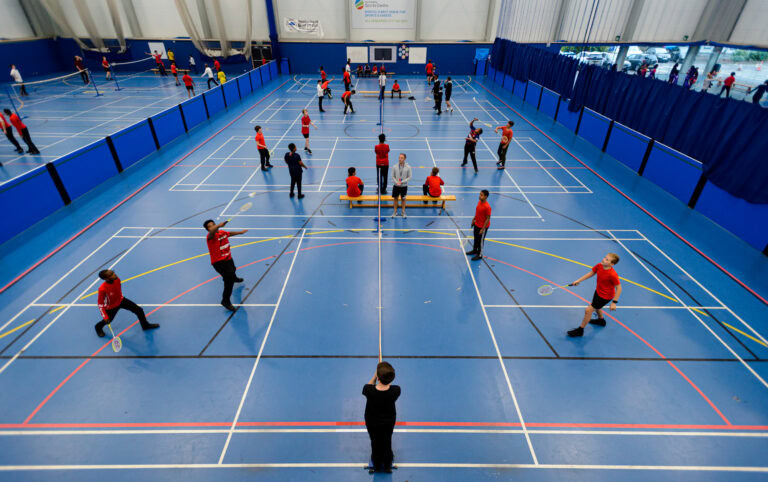Following the launch of London Sport’s ‘Exploring the value of swimming and public pools’ in June 2023, this weekly series will focus on challenges and solutions to help sustain leisure centres, ensuring that we future-proof youth sport and physical activity.
At the end of the four-week blog series, readers will be offered various calls to action – brought together by London Sport and London’s local authorities – for consideration to tackle the increasingly concerning issues.
Local authority challenges
According to London Councils, the BBC and the Evening Standard, local authorities in London are at a growing risk of facing more cuts to their public services unless a significant funding gap is addressed by the Government.
Findings from the recent Local Government Association (LGA) survey show that local authorities in London, and nationally, are facing a growing risk of Section 114 bankruptcy and more than half (55%) stated that they need to cut costs in their sport and leisure services.
Leisure centres across London are currently navigating through a cocktail of financial constraints such as the post-pandemic recovery, high inflation, cost of living, high energy bills, and the climate crisis. LGA states that 63% of buildings and swimming pools nationally are aging and in need of refurbishment (LGA, 2020).
In addition, Swim England’s ‘A decade of decline: The future of Swimming Pools in England’ report highlighted that London is going to face a shortage of 157 swimming pools by 2030.
Older leisure centres with swimming pools that have not been refurbished or modernised are at the greatest risk of closure. These generally use gas boilers for the hugely intensive work of heating the pool’s water and the air above it. Poorly insulated roofs also feature widely.
Swimming pools are energy intensive and have a significant carbon footprint, using five times as much energy per square metre than offices and any other building types (Carbon Trust, 2008). Indeed for some local authorities, they can represent up to 40% of the authority’s owned carbon footprint.
Despite facing mounting risk of closures and a potentially huge modernisation bill, leisure centres across London and nationally are working hard to ensure that their services are maintained to meet communities’ physical activity and health needs.
Climate change impact on London’s lower socio-economic groups
Socio-demographic and geographic differences mean that not everybody is equally affected by climate change. According to the Mayor of London’s Climate Risk map, Londoners from Black, Asian, and minority ethnic populations living in higher income deprivation areas may be more likely to face greater climate vulnerability due to personal and social factors. These factors could in turn affect deprived communities’ motivation and ability to exercise, and to cope with climate change.
London Sport’s October 2023 ‘Survey of Londoners’ national poll revealed that almost half of Londoners are concerned about the impact of climate change on exercise habits and London adults are more likely to change exercise habits due to climate change associated factors than the UK as a whole.
Not keeping up with climate change preparations and adaptations can have an impact on Londoners’ access and ability to exercise. For example, according to our poll, wealthier groups are more likely to exercise indoors and seek air-conditioned spaces in comparison to lower income groups to get around the extreme heat issue.
Robust evidence from Sport England’s recent cost of living report and Active Lives Survey have shown that adults and young people living in deprived areas are more likely to be inactive compared to the least deprived areas.
The likelihood of health disparity between wealthier and lower income groups could become greater if more leisure centres close within deprived areas due to its inability to sustain and adapt to future circumstances.
The importance of future-proofing swimming pools and leisure centres
The Climate Change Committee 2023 Progress Report to Parliament has, broadly speaking, stated that some progress has been made to help reduce the impact on the UK’s climate.
However, there are some key areas in which the UK is failing to reduce carbon emissions, such as slower than expected uptake of heat pumps and solar panels, and addressing the price of electricity and gas provision to businesses. The slow rate of modernisation of our leisure facility stock reflects this wider lack of pace.
As part of the Government’s efforts to make the UK climate change ready, the Department for Culture, Media and Sport is currently working with Sport England to ensure that struggling leisure centres do not face closures and to modernise leisure centres to become more energy efficient. Sport England’s recent £60m national phase 2 Swimming Pool Support Fund has invested a total of £5,845,000 in 30 leisure centres across 29 London boroughs. Further, an average of £195,000 was invested in one leisure centre per borough (except Wandsworth borough, where two leisure centres received Sport England’s funding). Local authorities have also been able to turn to the Public Sector Decarbonisation Scheme (PSDS) for grant funding.
Is it enough?
Although it is a start, the PSDS and Swimming Pool Support Funds are not sufficient to address a wide range of future challenges, particularly the growing number of aging buildings and building renovation costs, and the growing risk of local authorities encountering annual funding cuts which could have been used to support the long-term running of leisure centres.
In our next blog, we will explore how the London Borough of Havering have sought to address the current and future challenges of making their leisure facilities sustainable.
Read more in our manifesto.

